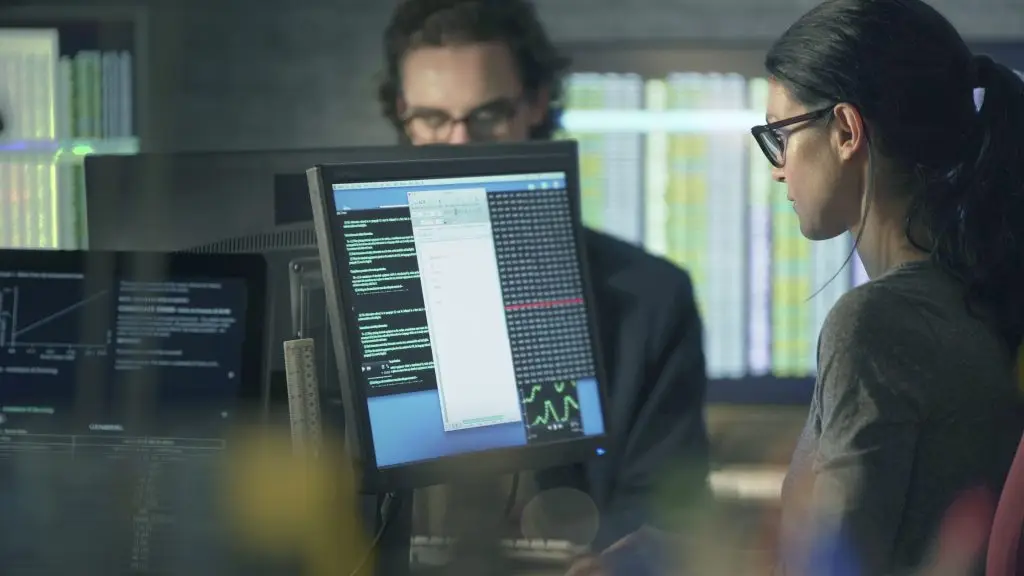Cybersecurity services
Keep your company and data safe from cyber threats. Collaborate with Calian to ensure proactive, round-the-clock protection and preparedness.

Fortify your security with strategic cyber defence
Championing cyber resilience with expert-led security solutions
By 2025, a lack of talent or human failure will be responsible for over half of significant cyber incidents. Navigating this intricate digital landscape requires more than just reactive measures—it demands strategic foresight and a robust defense orchestrated by seasoned experts. At Calian, we offer dynamic solutions to fortify your enterprise against threats and maintain operational integrity.
Read the case studyCalian IT and cyber insights

3 min read
Navigating the Cloud: Strategies, Security and Generative AI in 2024
The world of cloud computing is evolving at a rapid pace, and as we approach 2024, Calian has identified five key trends emerging that promise to reshape the way organizations leverage cloud technologies.

5 min read
Calian CARES: Gearing Up to Face the Future by Investing in Cybersecurity Research
Calian Partners with Dalhousie University to Study Cybersecurity and Privacy Threats Related to IoT Data Exhaust

2 min read
Google Engages iSecurity, a Calian Company, to Conduct Assessments of Google Cloud
Privacy impact assessment and threat risk assessment help Google meet legal obligations and remain compliant with robust privacy legislation for healthcare.
Wireless security vulnerability and pen testing

Wireless vulnerability assessment and penetration testing
- Techniques include rogue AP, WPS brute force and packet sniffing.
- Focus on external threats and internal network vulnerabilities.
- Transition from external to internal user perspective.

Penetration testing and vulnerability analysis
- Identifies methods like credential theft, router takeover, and DHCP attacks.
- Remote testing via a device connected to Calian’s network.
- Detailed reporting of findings with security enhancement recommendations.
Understanding the layers of the web
Surface web
The surface web consists of all the publicly accessible websites indexed by traditional search engines, easily accessible and visible to the general internet user.
Deep web
The deep web includes web pages not indexed by standard search engines, often requiring specific credentials for access, such as private databases, academic journals, and members-only websites.
Dark web
The dark web is a small, hidden section of the deep web, intentionally concealed and inaccessible through standard browsers, often associated with anonymous activities and requiring special software like Tor for access.
Understanding different types of threats
- The risk of sensitive data leaks due to partner companies’ misconfigurations.
- Code containing private data like passwords and tokens, often found in open-source repositories.
- Internal documents, such as reports and invoices, at risk for unauthorized access through web security vulnerabilities.
- The use of a company’s brand by threat actors to spread malware or for illicit activities on the Dark Web.
- Impersonation or misuse of company profiles on social media for malicious activities.
- Compromised user credentials requiring immediate action for removal and protection of your environment.
- Company-owned items, like apps, illicitly copied or used for malicious purposes.
- Internet-connected devices or software vulnerabilities that could be exploited by threat actors.


Modernize and secure your IT infrastructure
Speak to an expert to empower your organization’s success in the digital realm.
Calian's global operations
With global security operations centres, Calian provides support around the clock, from day to night, enhancing security capabilities worldwide.
Current Region
Social responsibility at Calian
Committed to social responsibility.
ESG—more than a buzzword.
Our vision builds on our mission, values, historical commitment to social responsibility and key competencies. It provides a framework and focus for our activities and corporate communications related to ESG (Environmental Social Governance).
Download ESG report
Your service inspires us.
Proudly welcoming 100+ veterans to our team every year
Their expertise enriches our solutions, and hiring military spouses is our heartfelt way of giving back to the defence community. We’re committed to being there for you, in and out of uniform.
Explore opportunities

Relocating? We’ve got you covered.
4,000+ family members connected with family doctors
Our partnership with the Canadian Forces Morale and Welfare Services ensures that military family members are connected with family doctors, hassle-free.
Learn more

Building a resilient community together.
$650,000+ in corporate giving
We are woven into our community’s fabric, our support extending to renowned organizations and causes. We’re not just about business; we are about building a supportive and resilient community together.
Learn more

Engaging in research that matters.
Our contributions to significant research projects and our focus on environmental safety are unwavering. We’re front-runners in compliance with environmental laws and continually innovate to lessen our ecological footprint.
Learn more

Committed to exceeding expectations.
30+ Indigenous community engagements
With a published Indigenous engagement policy, Calian sets out the framework and guidelines for all Calian business activities while being wholly committed to meeting—even exceeding—the five per cent Indigenous participation requirement on all Federal contracts.
Learn more
Global innovation for connected, safe and healthy lives
Explore Calian's four business units below.


